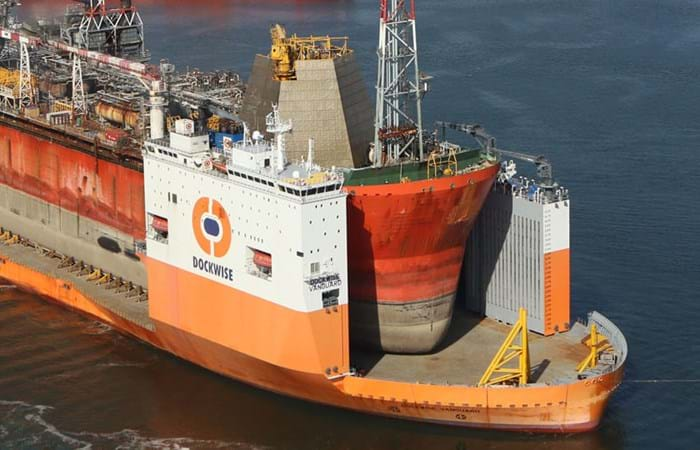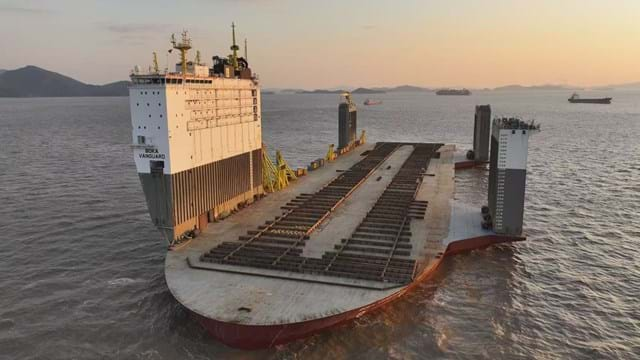The Armada Intrepid, which is owned by the Malaysian company Bumi Armada, is an FPSO (Floating Production, Storage and Offloading) vessel which needed to be dry transported from Rotterdam (Netherlands) to Batam (Indonesia) on the Dockwise Vanguard. The FPSO is 245 m long and weighs 60,000 metric tons. The DWV (275 x 70 m) has a deadweight of 117,000 metric tons.
Project challenges
The main challenges, which were dealt with effectively during project preparation and execution, were:
- The actual data for the FPSO was known at a very late stage of the project, considerably reducing the time available for the engineering phase;
- The hull of the FPSO was stiffer than the hull of the DWV. This difference in the deflection characteristics of the two vessels resulted in high peak loads on the forward and aft ends of the cribbing wood and the FPSO hull when a sagging wave was introduced in the design phase. It was a huge engineering challenge to determine the best cribbing layout within a very short time. In the end, the cribbing beams at the bow and stern were reduced in height (by up to -40 mm) to manage the high peak loads exerted on the FPSO structure;
- The water at the loading location was not deep enough to load the FPSO safely. A few days prior to loading, half a meter silt was dredged from the seabed to provide an underkeel clearance of 0.5 m during the submerging operation;
- Access to the discharge location was a challenge in itself because of the shallow patches and wrecks in the approach channel. Good seamanship of the vessel’s crew, in combination with additional detailed navigational charts of the area and the early boarding of the pilot, ensured that the DWV arrived safely at the discharge location.
Conclusion
The Armada Intrepid FPSO was transported successfully from Rotterdam (Netherlands) to Batam (Indonesia). Dockwise provided the required service in time to the Client, dealing with all the given engineering and operational challenges. Evaluating the project preparation and execution, it can be concluded that a combination of operational best practices and engineering analysis was decisive for the safe, controlled and successful execution of the project.

